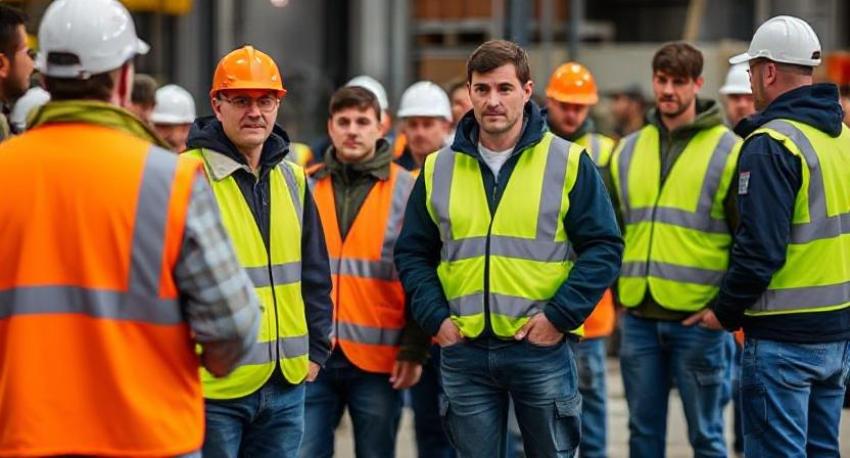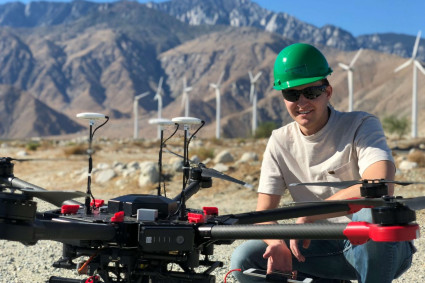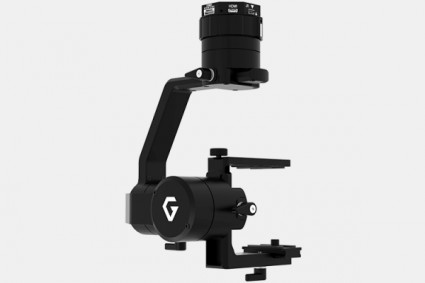
High visibility clothing helps keep workers safe in environments where they need to be easily seen. Understanding the requirements, and classes of high visibility protective clothing makes workplaces safer. Is high visibility clothing mandatory? is a frequently asked question. Let's break down the main points into clear, easy-to-follow steps for a compliance guide.
What Is High Visibility Clothing?
Wearing high visibility clothing, also called hi-vis or reflective clothing, is made with fluorescent materials and reflective strips. These features improve visibility during the day, low-light conditions, and at night. Workers in industries like construction, roadwork, and warehousing often rely on high visibility protective clothing to reduce the risk of accidents.
The main purpose of high visibility clothing is to make the wearer stand out from their surroundings. This is particularly important in areas where machinery is in operation or where vehicles move frequently. By wearing visible clothing, workers are less likely to be overlooked, lowering the chances of workplace incidents.
High Visibility Clothing Requirements
Meeting high visibility clothing requirements is necessary for workplace safety and legal compliance. These requirements typically depend on factors such as work environment, traffic speed, and lighting conditions.
Key points about high visibility clothing requirements:
Material standards: The clothing must use fluorescent materials for daytime visibility and reflective tape for night visibility.
Surface area: There are minimum requirements for the amount of reflective and fluorescent material, which vary based on the clothing class.
Proper fit: Loose or ill-fitting clothing can reduce visibility, so garments should fit correctly without obstructing movement.
Maintenance: Dirty or worn-out high visibility clothing loses its effectiveness, so regular inspection is necessary.
Employers must follow the rules about high visibility clothing by figuring out what risks are in the workplace, and giving their teams the right clothes.
Understanding High-Visibility Clothing Class 1, 2, and 3
High-visibility clothing falls into three distinct classes, each serving a specific purpose:
Class 1: Offers the lowest level of visibility and is suitable for workers in areas with slow-moving vehicles or low-risk environments. Examples include warehouse staff working indoors or parking attendants.
Class 2: Provides moderate visibility and is required for workers near roadways where traffic moves up to 50 mph. This includes people who work in building and on the ground at airports.
Class 3: Delivers the highest level of visibility and is necessary for workers in high-risk zones with fast-moving traffic or poor lighting. As examples, think about first responders and road building teams.
Meeting high-visibility clothing class 1, 2, and 3 standards depends on the level of hazard present. Employers should look at these risks to pick the right class for their team.
Is High Visibility Clothing Mandatory?
A common question businesses face is: Is high visibility clothing mandatory? In a lot of situations, the answer is yes. Regulations typically require high visibility protective clothing for workers in environments where low visibility poses a risk.
For example:
Construction sites: Workers near traffic or heavy machinery must wear high visibility clothing.
Roadwork zones: Reflective garments are mandatory for anyone working near public roads.
Warehouse operations: Wearing clothes that are easy to see is common for people who drive trucks or work with materials near moving vehicles.
Occupational safety authorities outline high visibility clothing requirements to protect workers. Failing to provide appropriate clothing may result in penalties, but more importantly, it raises the risk of accidents and injuries.
High Visibility Clothing Uses in the Workplace
High visibility clothing goes beyond construction and roadwork. These clothes are useful for many fields and make many places safer.
Common high visibility clothing uses include:
Transportation and logistics: Truck drivers, delivery personnel, and airport staff rely on visible clothing to stay safe in high-traffic areas.
Emergency services: Police officers, firefighters, and paramedics use high visibility protective clothing during rescue operations to remain visible to the public, and other responders.
Manufacturing and warehousing: Workers moving between aisles, managing forklifts, or handling heavy loads wear high visibility clothing to reduce collision risks.
Public utilities: Electricians, gas workers, and maintenance crews use reflective garments when working on roadsides, or in dimly lit environments.
The variety of uses for high visibility clothing shows its significance across businesses, not just in traditional high-risk areas.
Selecting the Right High Visibility Protective Clothing
Choosing the correct high visibility protective clothing involves assessing workplace conditions, and risks. Consider the following:
Job environment: Identify traffic speeds, lighting, and proximity to machinery.
Clothing class: Determine if class 1, 2, or 3 garments best suit the worksite hazards.
Comfort and fit: While staying secure enough to stay visible, clothing should allow for ease of movement.
Durability: High-quality materials and proper stitching extend the lifespan of the clothing.
By aligning these factors with high visibility clothing requirements, businesses can select the right gear for their teams.
Keeping High Visibility Clothing Effective
Visible clothing only works when it's maintained properly. Reflective materials lose their effectiveness if they become dirty or damaged. To keep high visibility protective clothing in top condition:
Regularly inspect for wear and tear.
Clean garments according to manufacturer guidelines.
Replace clothing, when reflectivity fades.
Employers should tell their workers to check their clothes every day and let them know immediately if anything is wrong.
Final Thoughts on High Visibility Clothing Compliance
Following the rules about wearing high visibility safety apparel isn't just about following the law; it's also about keeping workers safe and stopping accidents. Understanding high-visibility clothing class 1, 2, and 3 standards, knowing is high visibility clothing mandatory, and recognizing the wide range of high visibility clothing uses all contribute to a safer workplace.
By choosing the right high visibility protective clothing and maintaining its effectiveness, businesses create an environment where workers feel safe, seen, and supported.




